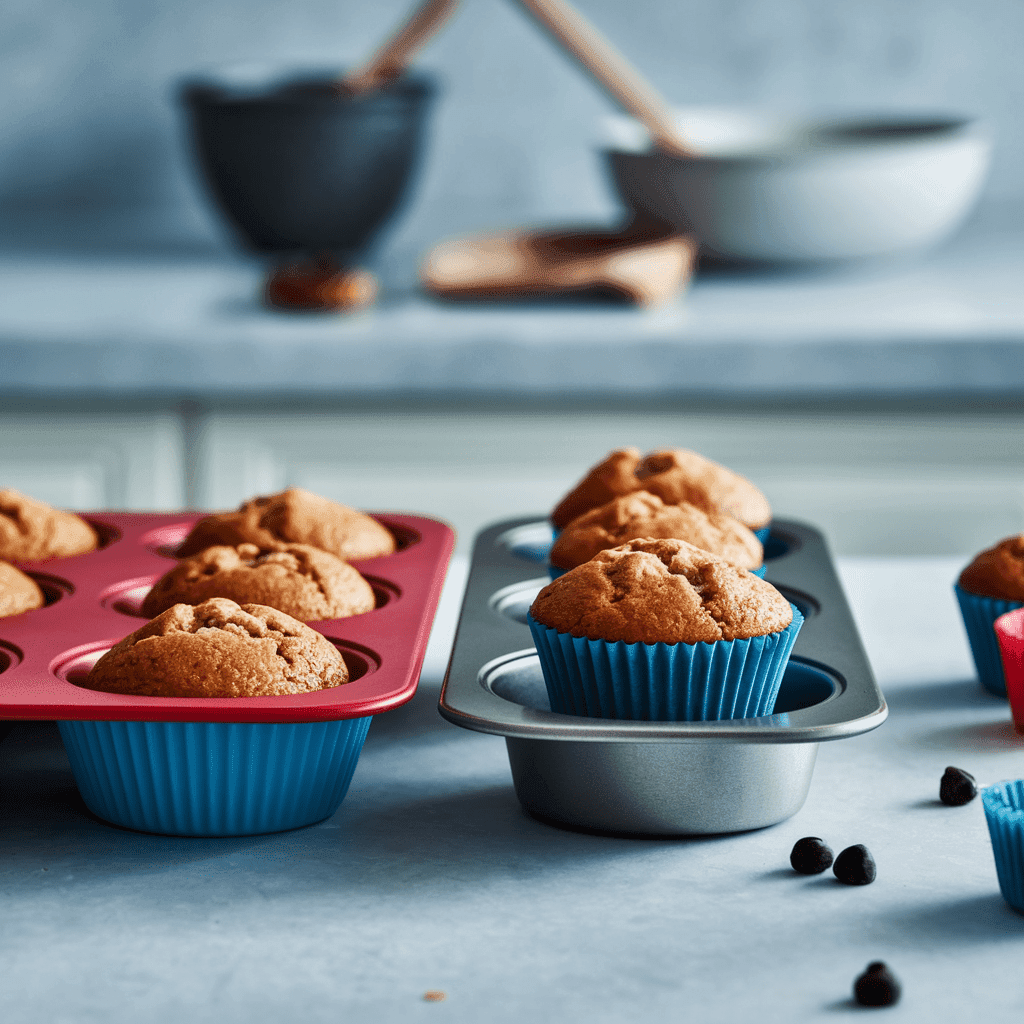Introduction
When it comes to baking muffins, choosing the right muffin tin can make all the difference. Silicone and metal muffin tins are the two most popular options, but each has its own advantages and drawbacks. Whether you prioritize durability, heat distribution, or ease of cleaning, understanding the pros and cons of each material will help you make the best choice for your baking needs.
Silicone Muffin Tins: Pros & Cons
Pros:
✅ Non-Stick Surface – Muffins easily pop out without greasing or liners.
✅ Flexible & Lightweight – Easy to store and maneuver.
✅ Heat Resistant – Safe up to 500°F (260°C), making them versatile for baking and freezing.
✅ Easy to Clean – Dishwasher-safe and resistant to staining.
✅ Non-Reactive Material – Won’t rust, corrode, or leach chemicals.
Cons:
❌ Less Heat Conductivity – Can lead to uneven browning compared to metal.
❌ Not as Rigid – Can be flimsy when transferring batter to the oven.
❌ Absorbs Odors – Some lower-quality silicone can retain strong smells over time.
Metal Muffin Tins: Pros & Cons
Pros:
✅ Superior Heat Conductivity – Ensures even baking and golden-brown muffins.
✅ Durable & Long-Lasting – Resistant to warping and can last for years.
✅ Sturdy Structure – Holds shape well when transferring batter into the oven.
✅ Works Well for Crispier Edges – Ideal for achieving a crunchy muffin top.
Cons:
❌ Requires Greasing or Liners – Muffins can stick without proper preparation.
❌ Can Rust or Corrode – Especially if not dried properly after washing.
❌ Harder to Clean – Food residue can get stuck in corners, requiring more scrubbing.
Which One Should You Choose?
Your decision depends on your baking style and preferences:
- If you want easy cleanup and a non-stick surface, go with silicone muffin tins.
- If you prefer golden-brown, evenly baked muffins, metal tins are the better choice.
- For best results, many bakers use a combination: silicone for easy-release baking and metal for superior heat conductivity.
Tips for Baking with Silicone & Metal Muffin Tins
Use a Baking Sheet with Silicone Tins – This prevents spills and makes handling easier.
Grease Metal Tins Well – Prevents sticking and ensures easy removal.
Adjust Baking Times – Muffins in silicone may take a little longer due to lower heat conductivity.
Choose High-Quality Silicone – Look for FDA-approved, BPA-free options for safety.
Final Verdict: Which is Better?
There’s no one-size-fits-all answer—it depends on what you value most in your baking. For crisp, golden muffins, metal tins win. For hassle-free baking and cleanup, silicone is the way to go. If you bake often, having both in your kitchen gives you the best of both worlds!
Ready to upgrade your bakeware? Check out our top picks for silicone and metal muffin tins!
